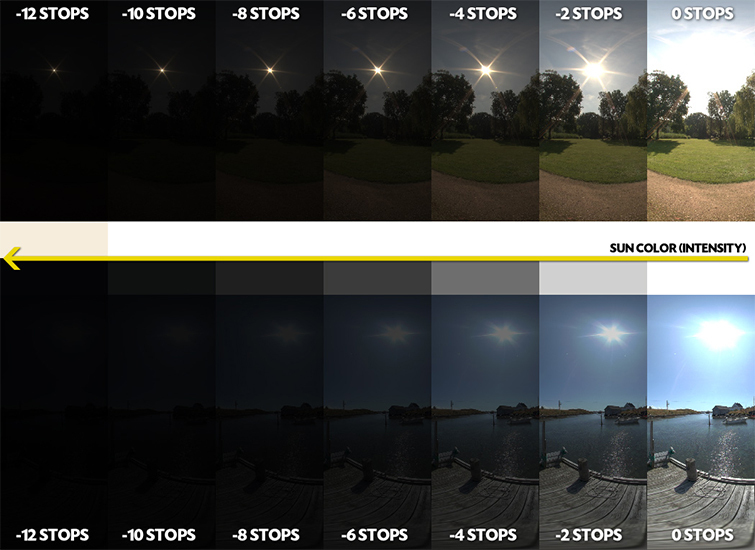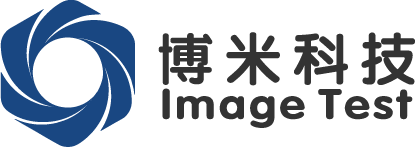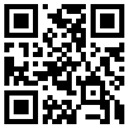推荐产品
电话:400-882-2230
邮箱:2548825886@qq.com
地址:北京市石景山区杨庄东街28号

EMVA1288 标准
图像传感器与相机性能测试标准
(Standard for Characterization of Image Sensors and Cameras)
R3.1 版2016 年 12 月 30 日
欧洲机器视觉协会(EMVA)发布www.emva.org
中国机器视觉联盟(CMVU)译2017 年 8 月 25 日
译者序
相机与图像传感器有很多传统的测试方法或一些专门为某种性能测试而制定的标准,但这些标准有些已经跟不上数字成像的发展步伐,而且其中的一部分也不适合机器视觉(MV) 行业使用。另外,由于没有一个统一的标准,各大图像传感器与相机生产商就都采用各自的性能测试标准,这些标准对性能参数的定义、所使用的单位、测试方法与测试条件往往各不相同,专业的 MV 工程师甚至相机研发人员都很难根据这些数据表来对不同厂商的相机性能进行客观的比较,而用户则更难根据数据表来确定哪一款相机的性能更适合自己使用。
为了解决此问题,欧洲机器视觉协会(EMVA)于 2004 年 2 月成立了由 Awaiba 与 Basler 牵头,主要的图像传感器与相机生产商均参与其中的 EMVA1288 标准工作组,目标是建立一个统一的适合 MV 行业的相机与图像传感器性能测试标准,从而“让机器视觉工程师活得更轻松一点”(Make the MV Engineers lives easier)。经过一年半的研究准备,EMVA 于 2005 年 8 月正式发布了 EMVA1288 A1.0 版,相机性能测试终于有了一个统一的标准。
十多年来,EMVA1288 标准不断地发展完善,目前已经更新到了 R3.1 版(2016 年 12 月发布)。该标准现在已经被国外所有主流的相机与图像传感器生产商所承认,也正被大量的行业用户所接受和使用,在国内也正被越来越多的相机生产商及行业用户所认可与使用。
今天,EMVA1288 R3.1 标准中文版终于在国内正式面世了。专家介绍,最新的EMVA1288 R3.1 标准更规范、更严谨、更科学。
CMVU 决定把这个标准翻译成中文版用了近两年的时间,在这期间,行业专家给予了有力指导,行业同仁们给予了大力支持配合。通过大家的共同努力,终于如期完成了标准的翻译工作。同时,我们要看到国外的相机测试做得非常专业,一份按照 EMVA1288 标准做的相机性能测试报告通常都有十几甚至几十页,各类数据图表非常详实规范。真诚希望中国的相机制造商能够按照并珍惜这份规范的专业性标准,能够把我们国产的相机水平整体提高到一个新的台阶,CMVU 会进一步努力把该标准向相关政府部门申报设立为“国家标准”。
在此,也特别提醒大家,相关专家在翻译与审校过程中发现有个别地方英文原版有些小的错误,专家在译文中进行了更正并以脚注方式进行了说明,供读者参考。整个译文可能还会出现小的错漏之处,欢迎大家批评指正。
鸣谢翻译及审校人员
翻译: 徐英莹 副研究员(中国计量科学研究院),将 EMVA1288 R3.0 版翻译成中文;审校 1: 郝志航 教授(中国科学院长春光学精密机械与物理研究所);
审校 2: 庄阿伟 总工程师(福州鑫图光电有限公司 www.tucsen.com);
谢 森 相机业务 SE 总工程师(凌云光技术集团有限责任公司 www.lusterinc.com);于 渝 总工程师(重庆港宇高科技开发有限公司 www.camyu.net);
审校 3: 冯 兵 博士(西安远望图像技术有限公司 www.LookLong.com),2009 年开发出国内第一套完整的 EMVA1288 测试平台,并成功应用于航天成像器件的筛选中。对 EMVA1288 R3.0 中文版进行第 3 次审校并升级到最新的 R3.1 版。
错漏之处请回复至:yxj@china-image.cn
目 录
1 概述与范围 6
2 灵敏度、线性度、噪声 7
2.1 线性信号模型 7
2.2 噪声模型 9
2.3 信噪比 9
2.4 信号饱和与绝对灵敏度阈值 10
3 暗电流 12
3.1 平均值和方差 12
3.2 温度依赖性 12
4 空间非均匀性和缺陷像元 12
4.1 空域方差,DSNU,PRNU 13
4.2 非均匀性的类型 13
4.3 缺陷像元 14
4.3.1 对数直方图 14
4.3.2 累积直方图 15
4.4 高通滤波 15
5 测量设备和方法概述 16
6 灵敏度、线性度和噪声的测量方法 17
6.1 光源的几何一致性 17
6.2 光源的光谱特性 18
6.3 辐射量变化 18
6.4 辐射量的标定 19
6.5 线性度和灵敏度的测量条件 19
6.6 基于光子转移方法的测量评估 20
6.7 线性度的评估 24
7 暗电流的测量方法 26
7.1 一定温度下暗电流的评估 26
7.2 不同温度下暗电流的评估 27
8 空间非均匀性和缺陷像素的检测方法 27
8.1 空域噪声标准差、DSNU、PRNU 及总信噪比 28
8.2 水平和垂直频谱 29
8.3 水平与垂直断面图 31
8.4 缺陷像元特征评估 33
9 光谱灵敏度的测试方法 36
9.1 光谱光源设置 36
9.2 测试条件 36
9.3 校准 37
9.4 评价 37
10 测试结果发布 39
10.1 基本信息 39
10.2 EMVA 1288 数据手册 39
附录 A 文献 41
附录 B 符号说明 42
附录 C 相对于 A2.01 版的修改说明 43
C.1 扩展的特性 43
C.2 扩展了改变光照的方法 43
C.3 测试条件与流程的修改 43
C.4 对于最小时域噪声测量,引入了量化噪声 44
C.5 高通滤波的非均匀性测量 44
附录 D 相对于 R3.0 版的修改说明 44
D.1 变化 44
D.2 增加的功能 45
附录 E 贡献者名单 45
Acknowledgements(致谢,译文略)
EMVA 1288 is an initiative driven by the industry and living from the personal initiative of the supporting companies and institutions delegates as well as from the support of these organizations. Thanks to this generosity the presented document can be provided free of charge to the users of this standard. EMVA thanks those contributors (see Appendix E) in the name of the whole vision community.
Rights, Trademarks, and Licenses(版权、商标及许可证,译文略)
The European Machine Vision Association owns the ”EMVA, standard 1288 compliant” logo. Any company can obtain a license to use the ”EMVA standard 1288 compliant” logo, free of charge, with product specifications measured and presented according to the definitions in EMVA standard 1288. The licensee guarantees that he meets the terms of use in the relevant release of EMVA standard 1288. Licensed users will self-certify compliance of their measurement setup, computation and representation with which the “EMVA standard 1288 compliant” logo is used. The licensee has to check regularly compliance with the relevant release of EMVA standard 1288.
If you publish EMVA standard 1288 compliant data or provide them to your customer or any third party you have to provide the full data sheet. An EMVA 1288 compliant data sheet must contain all mandatory measurements and graphs (Table 1). If you publish datasheets of sensors or cameras and include the EMVA 1288 logo on them, it is mandatory that you provide the EMVA 1288 summary data sheet (see Section 10.2). EMVA will not be liable for specifications not compliant with the standard and damage resulting there from. EMVA keeps the right to withdraw the granted license any time and without giving reasons.
About this Standard(关于本标准,译文略)
EMVA has started the initiative to define a unified method to measure, compute and present specification parameters and characterization data for cameras and image sensors used for machine vision applications. The standard does not define what nature of data should be disclosed. It is up to the component manufacturer to decide if he wishes to publish typical data, data of an individual component, guaranteed data, or even guaranteed performance over life time of the component. However the component manufacturer shall clearly indicate what the nature of the presented data is.
The standard is organized in different sections, each addressing a group of specification parameters, assuming a certain physical behavior of the sensor or camera under certain boundary conditions. Additional sections covering more parameters and a wider range of sensor and camera products will be added successively. There are compulsory sections, of which all measurements must be made and of which all required data and graphics must be included in a datasheet using the EMVA1288 logo. Further there are optional sections which may be skipped for a component where the respective data is not relevant or the mathematical model is not applicable. Each datasheet shall clearly indicate which sections of the EMVA1288 standard are enclosed.
It may be necessary for the manufacturer to indicate additional, component specific information, not defined in the standard, to fully describe the performance of image sensor or camera products, or to describe physical behavior not covered by the mathematical models of the standard. It is possible in accordance with the EMVA1288 standard to include such data in the same datasheet. However the data obtained by procedures not described in the current release of the EMVA1288 standard must be clearly designated and grouped in a separate section. It is not permitted to use parameter designations defined in any of the EMVA1288 modules for such additional information not acquired or presented according the EMVA1288 procedures.
The standard is intended to provide a concise definition and clear description of the measurement process and to benefit the Automated Vision Industry by providing fast, comprehensive and consistent access to specification information for cameras and sensors. It will be particularly beneficial for those who wish to compare cameras or who wish to calculate system performance based on the performance specifications of an image sensor or a camera.

Recommended products
推荐产品
Recommended video
推荐视频


Recommended news
推荐新闻





